TravelDeparture Gate: Morocco
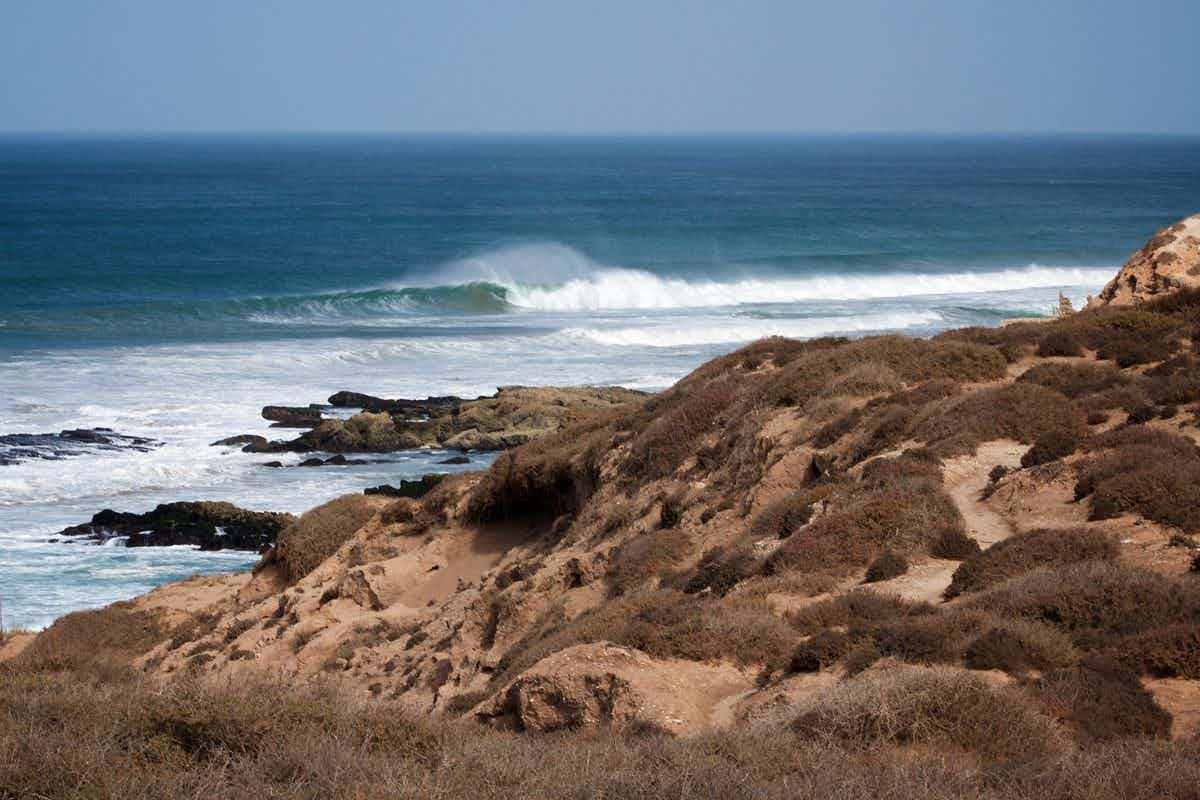
In the depths of winter, surfers who have the opportunity to chase waves often migrate to the lower latitudes of their respective hemispheres. In Europe, just like the swallows, travelling surfers head south through the later half of the year following the waning warmth until they eventually cross the Straits of Gibraltar to North Africa, and the right hand point breaks of Morocco. It’s the European equivalent of a Baja run for Californians or a trip to Indonesia for Aussies, providing great waves, winter sun and more exotic culture a short hop from home.
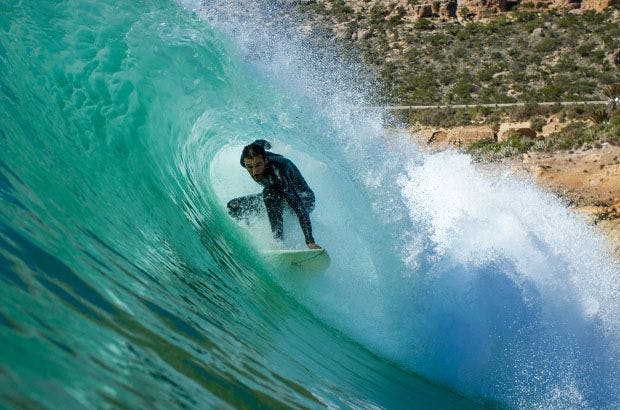
Image: Down The Line Photography/Peter Chamberlain
The strong winds and heavy rain that often accompany winter swells in Europe don’t make it this far south, and the additional distance gives the swell train a chance to get itself organized so by the time winter swells arrive on the Moroccan coast they are clean and well spaced. Whilst the country can boast a range of different breaks, it is the points of central Morocco, and the town of Taghazoute in particular, that are the real draw to visiting surfers. Just half an hour’s drive north of the coastal city of Agadir, Taghazoute boasts a series of world famous point breaks, as well as several reefs and beach breaks within a twenty-minute walk of the town. The microclimate around Agadir results in around 300 days sunshine a year, and the coastal mountains between Agadir and Cap Rhir (just to the north of Taghazoute) funnel the predominantly northerly winds offshore. The main selling point of the region is Anchor Point (a.k.a. Anka Point), a long right hand point that breaks from just in front of the ruins of an old anchor factory and, rumor has it, can break for a full kilometer all the way back to Taghazoute on a big day with a high tide. It needs a big swell to break properly and is best from low to mid tide, but can hold significant size and offers long, green walls to carve. There are multiple take-off spots that help to spread the crowd out on this, Morocco’s most famous wave.
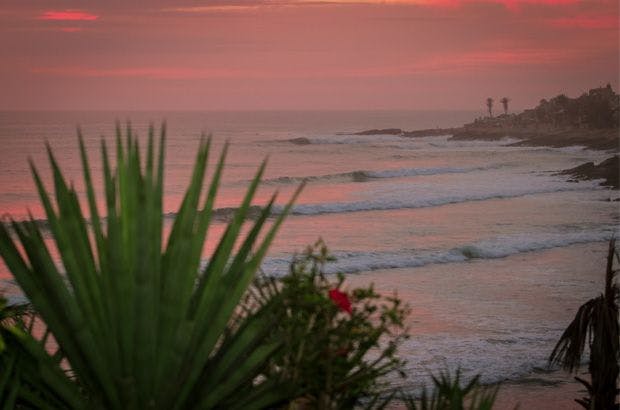
Image: Down The Line Photography/Peter Chamberlain
Other waves of note are Killer Point (the next point to the north of Anchors), which is angled to gather any swell going and is one of the most consistent breaks in the area although it breaks a long way from shore and has a reputation for always being bigger than it looks, and Panoramas, on the southern edge of Taghazoute. Panoramas is a fast, barreling wave that requires a good swell to start breaking well.
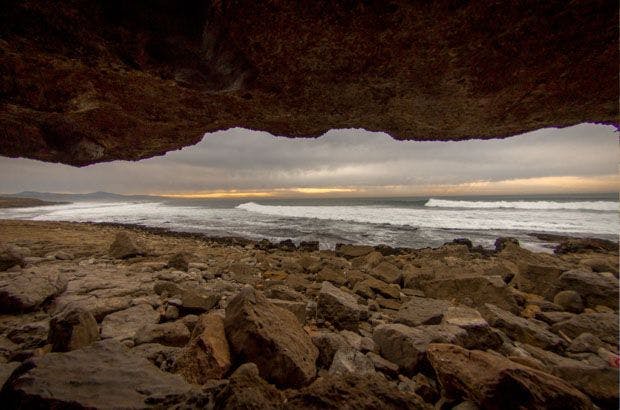
Image: Down The Line Photography/Peter Chamberlain
A fifteen-minute drive north of Taghazoute, just south of Cap Rhir, is Boliers. So called because of the wrecked ship’s boiler implanted on the reef that marks both the paddle out and take-off spot, Boilers is a consistent and powerful right hand reef made famous by appearances in surf movies such as Taylor Steele’s Sipping Jetstreams.
Those are just the tip of the iceberg, however, as there are many more breaks (both publicized and kept secret) along this stretch of coast, ensuring that you can always get good waves somewhere in any given conditions.
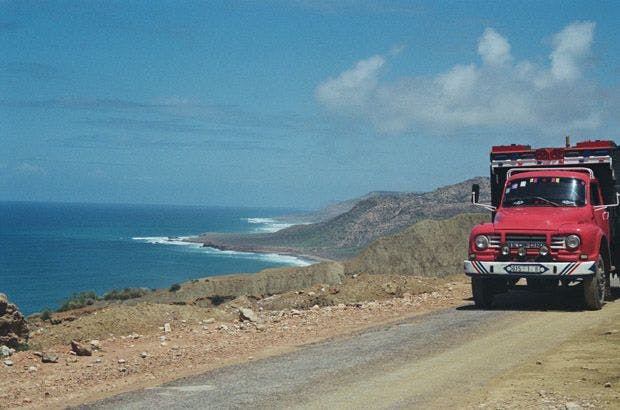
Surfing arrived in Morocco in the early 1960s, introduced by US servicemen based there, but it was the hippy trail of the late 60s and early 70s that really put it on the map. Since the hippies moved on, Taghazoute has promoted itself as the surfing capital of North Africa and the town’s economy is largely reliant on travelling surfers. There is a multitude of surf camps and surf-hostels (many of them owned and operated by Europeans) and flats and apartments are available to rent in the town, but the growth of surf tourism here has unfortunately outpaced the development of local services and you’re well advised to avoid surfing any of the town breaks after any rainfall. Free camping in a van above the points is also a thing of the past, as new apartment blocks, tourist resorts and fenced camp grounds attempt to monetize the coast’s natural resources.
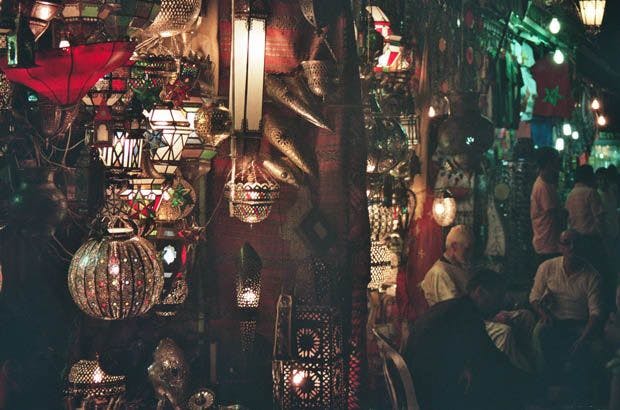
Despite the fact that you can almost always find surf somewhere on this stretch of coast, you would be well advised to allocate some time to other activities during a trip to Morocco. Just 150km away inland to the northeast is the red city of Marrakech, the gateway to the High Atlas Mountains. A few days exploring around here can see you hiking snow-covered mountains by day and exploring the atmospheric souks by night in an itinerary of full sensory overload.
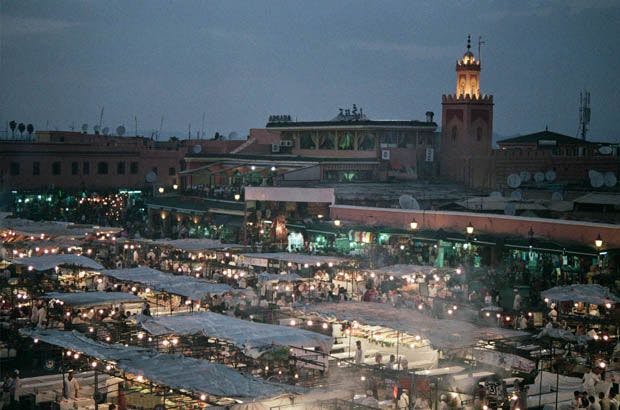
But it is the waves that draw surfers here and it is the waves that they will keep returning to. Morocco has so much to offer above and beyond it’s well known surf breaks, which are reason enough alone to visit. South of Agadir stretches hundreds of miles of largely uninhabited desert coastline bordering the vast Sahara: a true surf frontier.
WHERE: Fly to Agadir (AGA) or Marrakech (RAK)
WHEN: Northern winter November to April
WHY: Long right-hand point breaks, North African culture
HOW: A shortboard and a semi-gun for if the points start to fire. Consider a fish if you intend to surf the beach breaks.